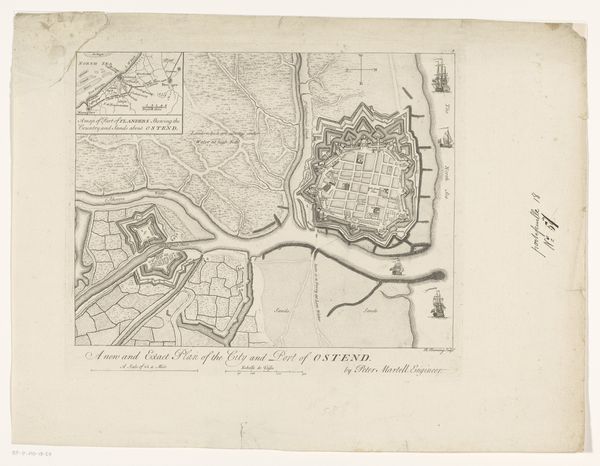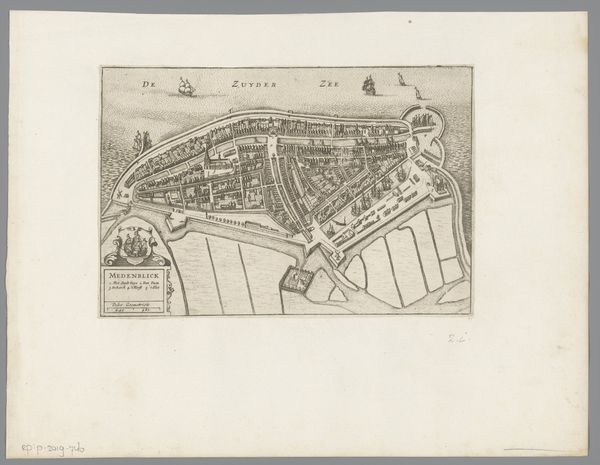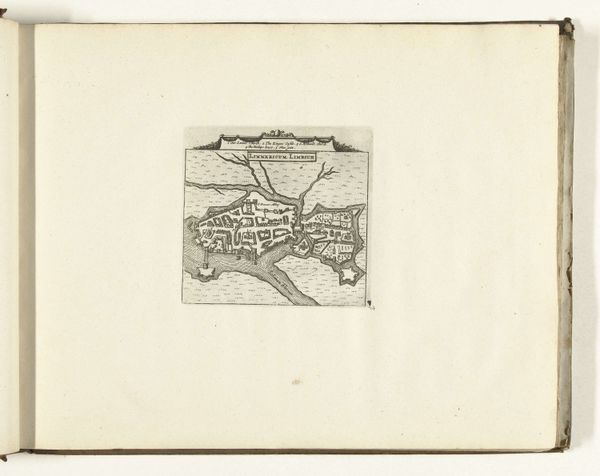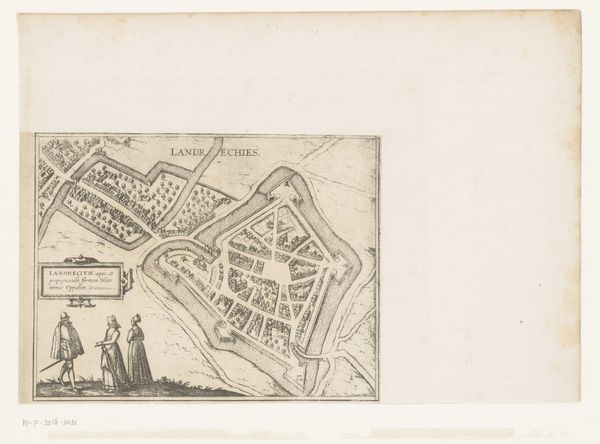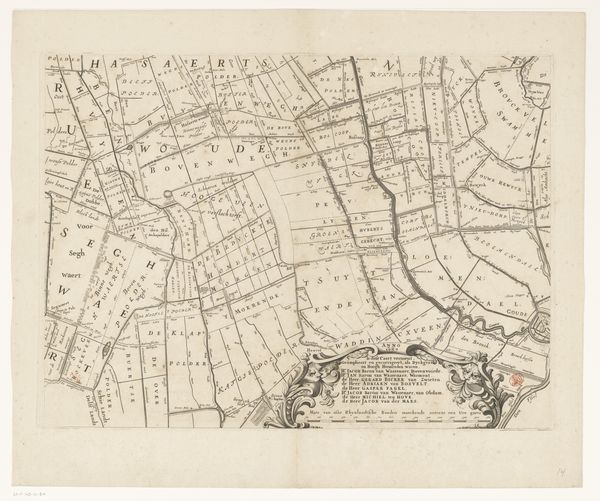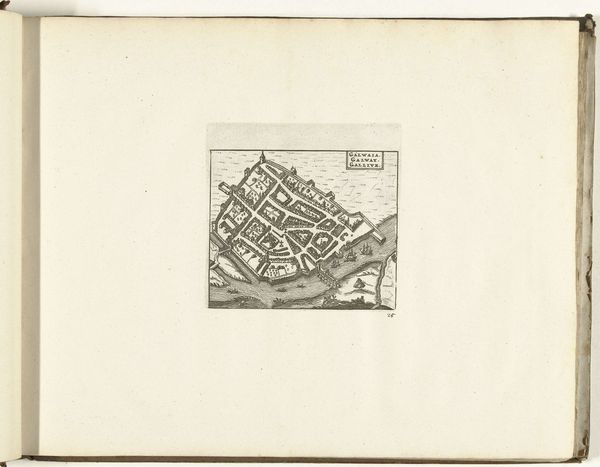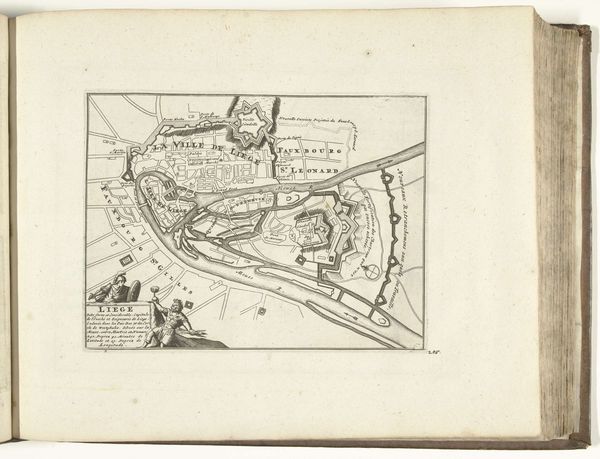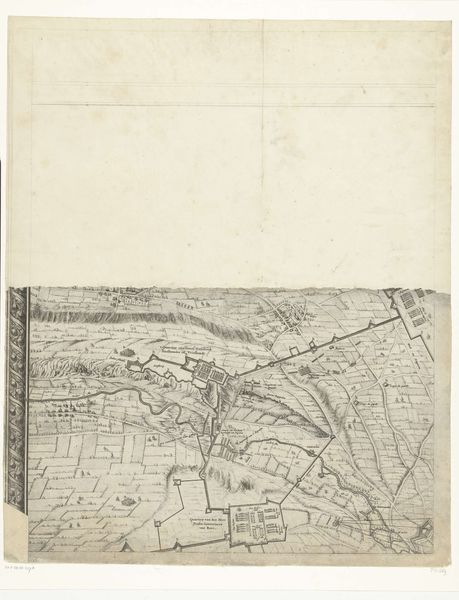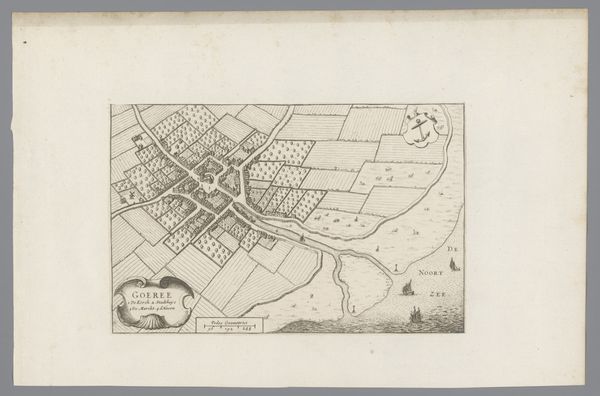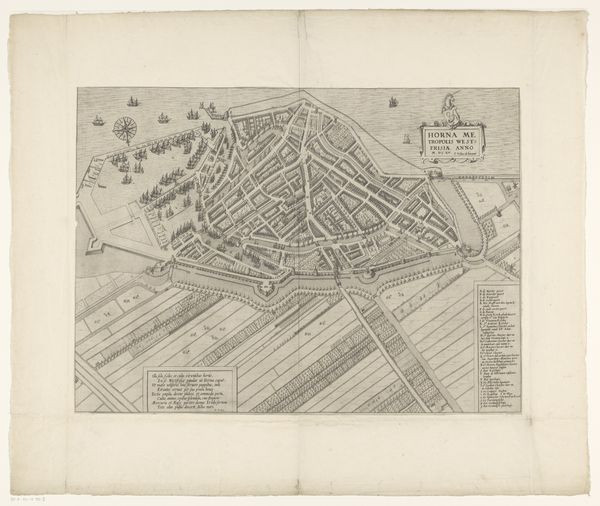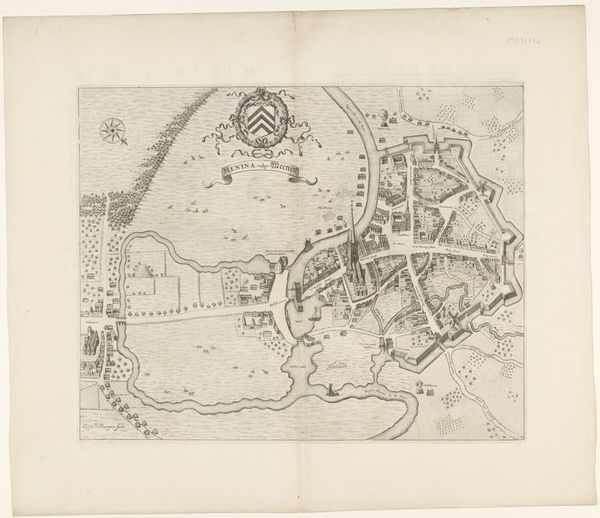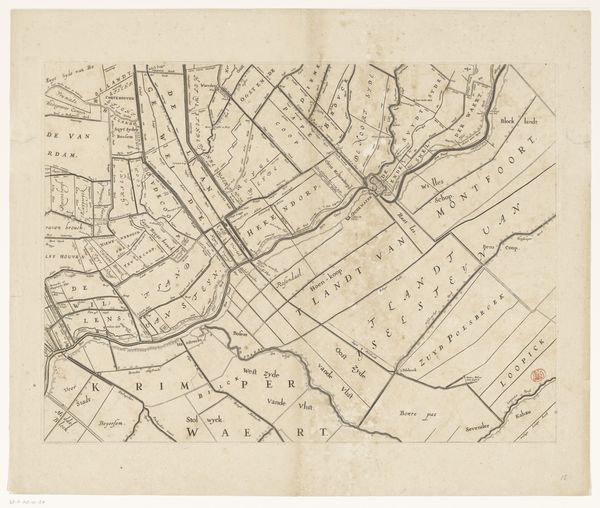
drawing, print, ink, engraving
#
drawing
#
aged paper
#
baroque
# print
#
pen sketch
#
old engraving style
#
landscape
#
personal sketchbook
#
ink
#
ink drawing experimentation
#
pen-ink sketch
#
line
#
pen work
#
sketchbook drawing
#
history-painting
#
storyboard and sketchbook work
#
sketchbook art
#
engraving
Dimensions: height 180 mm, width 260 mm
Copyright: Rijks Museum: Open Domain
Curator: This drawing, “Slag bij Steenkerke, 1692,” from 1726, appears to be an anonymous print depicting the Battle of Steenkerke. It’s a bird’s-eye view created with ink. Editor: The image is quite detailed; it almost feels like looking at an early version of a military map. How do you interpret this work beyond its representational purpose? Curator: It’s interesting you see it as a military map. Think about who would commission or consume an image like this in 1726. This isn't neutral cartography. This print commemorates a battle, embedding it in a particular narrative. How might the choices in representing the landscape, or troop formations, subtly reinforce a specific political perspective or even attempt to sway public opinion? Editor: That makes sense. So, the act of selecting what to include, even in a seemingly objective rendering, makes a statement? Curator: Precisely! Consider the social and political climate of the time. Who benefited from controlling the narrative around this battle? Understanding the power dynamics informs our reading of the piece. The 'anonymous' attribution is interesting here too, suggesting possibly that the maker was not wanting the spotlight, but acting in conjunction with a bigger agenda. What do you think that agenda could have been? Editor: That’s a fascinating way to look at it. I never considered the role of “anonymous” in shaping that kind of perspective or what impact that would have in society at that time. Thanks for opening my eyes. Curator: Indeed. Art is so often about the unseen forces shaping what we see, isn't it?
Comments
No comments
Be the first to comment and join the conversation on the ultimate creative platform.
